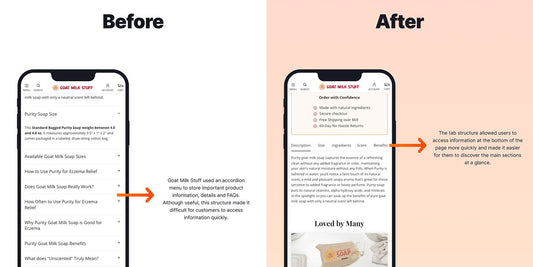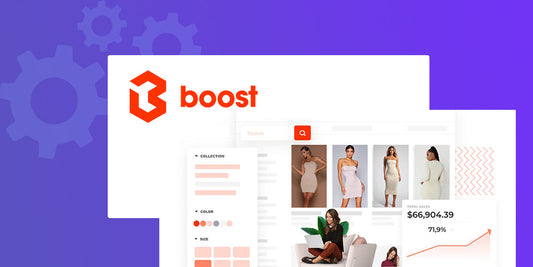Table of Contents
Get useful eCommerce stuff
Your eCommerce business has its very own set of Power Rangers — Power Customers. And you need to find out more about them so you can use them for good. They’re the customers who keep coming back, spend more money, and even tell their Power Ranger buddies about your business.
Your Power Customers will be the ambassadors for your eCommerce store, the ones who often purchase, frequently, and generally with a high AOV. Not only that, but they will sing your praises to friends and acquaintances and likely bring in even more Power Customers.
But before we get into more detail about Power Customers and what they can do for your business, you need to understand RFM Analysis.
RFM Analysis — The Game Changer
RFM stands for Recency, Frequency, and Monetary Value, and it’s the perfect way to find out which of your customers you should spend your marketing budget on (like those Power Customers we were talking about) and which ones you should just let go of.
While many focus on only one of these metrics, together, these three parts of the RFM equation are integral in getting the full picture of the customer journey. One of these alone won’t be able to tell you everything you need to know.
For example, customers who purchase frequently might not necessarily be those Power Customers you want to nurture the most, as they may need to rank higher on monetary value. Generally, you want customers who purchase frequently with high monetary value. And of course, if they had this pattern three years ago but not now, they won’t be your targeted Power Customers, so you’ll need to account for recency too.
RFM Analysis allows you the ability to segment your customers into:
- High Spenders
- Loyal Customers
- Potential Loyal Customers
- New Customers
But that’s not all.
You’ll also figure out which customers used to be loyal high-spenders but haven’t been in a long time. When it comes to those, it’s a good idea to reach out and find out why they haven’t returned. If you want to know how to reach out to these specific customers, keep reading.
Finding Your Power Customers
The best way to find your Power Customers is to analyse their RFM scores with a tool like Omniconvert. While demographics, location, and types of customers were the traditional way of doing things and, at times, important factors to consider when creating marketing campaigns and targeted messaging, they should not be the sole focus.
Instead, by analysing RFM scores, businesses like yours can identify your Power Customers and create personalised marketing campaigns that are more likely to resonate with them. Personalisation with these customers can take place in your email marketing, ensuring they are getting everything they need, upselling, cross-selling, and making them feel valued.
But this personalisation can branch further than emails. Making the customer feel welcome with personalised on-site recommendations and their first name appearing on landing pages is a surefire way to catch their attention.
Customers are grouped using RFM Segmentation and can be targeted accordingly. RFM Scores are based on a score of 1-5, with 1 being low and 5 being high, for each section (Recency, Frequency, Monetary Value).
With RFM Segmentation, your customers will be divided into at least six groups, two of which are called Lovers and New Passions. Lovers are your most loyal customers, while New Passions have just come across your brand and are loving it. Both of these RFM Groups make up your Power Customers, and these are what their scores are for Recency ( R ), Frequency (F), and Monetary Value (M):


What to Do with Power Customers
Now that you know who your Power Customers are, it’s important to know what to do with them and how to approach them. It’s important, like the Power Rangers, to use your powers for good. Your main goals with Power Customers are to learn more about who they are, acquire more like them, and ensure they keep coming back.
It’s important to make these customers feel valued (because, let’s face it, they are) and find out what drives them to use your business. This can be determined by the use of NPS Surveys and web surveys (where you target specific customers), analysing the results of these and finding actionable insights to drive your eCommerce business.
NPS Surveys are one of the best ways to reach out to your customers on a personal level. These surveys usually consist of presenting customers with a question to rate the business (sometimes on specific things like your website or shipping, to hone in on potential problem areas). Once they’ve given a rating, you can present them with follow-up questions to get to the reason for their rating. For example, should customers rate 0-4, you may follow up with something like “We’re sorry to hear that. What troubles did you face?” You can then use the insights from these surveys to target improvements to problem areas or leverage good feedback within the copy on your website.
Using Omniconvert, you’ll be able to create surveys that either display on-site or static surveys, which are activated through a specific link when clicked, which you can add to your targeted Klaviyo email campaigns.
You can also offer them rewards for referrals, like with LoyaltyLion, with the logic that they will likely bring more Power Customers to your business.
Another strategy could be to target customers who fall just below Power Customers in the RFM ranking to potentially turn them into Power Customers. Find out what is making them less frequent or recent, and target them specifically to encourage them to return.
Too Much for You?
We know that it’s a challenge trying to manage an eCommerce business and everything that comes with it, never mind trying to strategise ways to continuously grow your Shopify revenue. Power Customers are the backbone of any business, and understanding their behaviour is the key to creating effective marketing campaigns.
By focusing on Power Customers and offering personalised messaging and incentives, eCommerce businesses like yours can get more for their marketing efforts and spend their marketing budget in all the right places.
If it’s a little too much to manage on top of your already full plate, the team at Blend can help you with everything from setup to targeting strategies and implementations. Get in touch with us today, and let’s get started.
About the author

Jade Bothma Marketing Strategist
Jade has a gift: her writing is both brilliantly clever and effortlessly funny. She's a Marketing Strategist who puts her all into every project, and it shows. Not just in the in-depth strategies she creates, but also in the extra effort she always gives, both to her team and clients. With her keen sense of humour and straight-to-the-point style, Jade truly makes our team shine and our content stands out. Beyond her talent, it's her genuine kindness and unwavering dedication that endears her to everyone. In many ways, she's the heartbeat of our team, bringing life and laughter to everything she touches.








